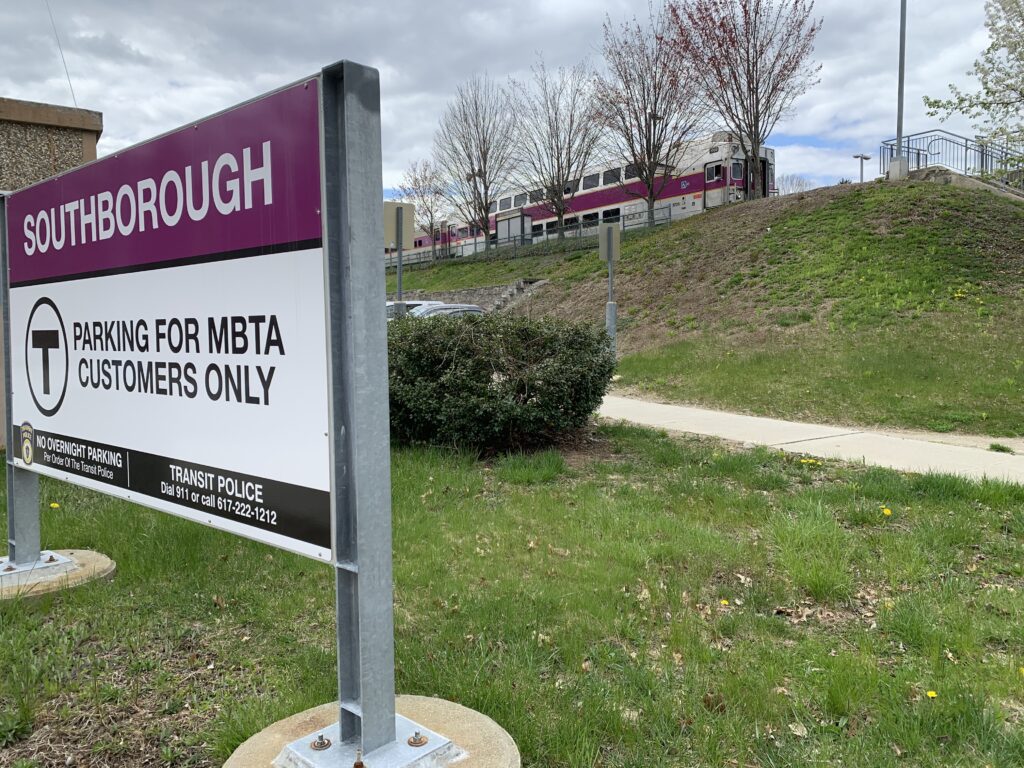The Planning Board at its Jan. 22 meeting primarily focused on continued discussions on how the town can comply with the MBTA Communities Act.
A draft proposal formulated by the Zoning Advisory Committee (ZAC) after many months of meetings was reviewed at the last Planning Board meeting.
Under the MBTA Communities statute, also referred to as 3A, 177 cities and towns that are in the Massachusetts Bay Transit Authority’s service area need to approve new zoning to permit multifamily housing near public transportation options. The denser housing, in theory, would encourage more people to take the T and depend less on cars. It also would help meet the state’s urgent demand for more housing. It was enacted in January 2021 as part of the state’s economic development bond bill.
If communities do not conform, they lose eligibility for 13 state grants and potentially could be sued by the state for violating fair housing law, according to Attorney General Andrea Campbell. Campbell last week issued a stern warning to the town of Milton that it may face legal action for noncompliance if voters there decide not to enact a zoning plan when they go to the polls on Feb. 13.
Hopkinton has been designated as an MBTA-adjacent community because of its proximity to the Southborough commuter rail station. It requires zoning for at least 750 housing units and a minimum gross density of 15 units per acre as of right for 50 developable acres. There can’t be any age-restricted zoning.
Language modifications made to draft
Since the last meeting, Principal Planner John Gelcich explained that ZAC made some modifications to the draft proposal to incorporate feedback. Most were minor language changes.
The 40-foot setback proposed for the upper Cedar Street subdistrict was a potential area of concern, he noted. But after speaking with a consultant working with the town who specializes in MBTA Communities Act compliance, he noted that if may be able to stand “because it is consistent with the area.”
He added that the consultant will attend a March Planning Board meeting once the draft has been finalized to provide feedback.
Language from the town’s Inclusionary Zoning Bylaw may be able to be included that would allow the number of required affordable housing units to be rounded up instead of down, as long as this policy is townwide.
Another change is that at least 25% of bicycle parking areas must be covered and incorporated into building design.
ZAC will meet one more time to revise this draft, Gelcich added.
Parking screening at multi-family developments discussed
Vice chair Rob Benson said he was concerned about outdoor parking at buildings developed under this zoning. He feared that the downtown would be transformed into “an eyesore,” with “a significant parking lot street side.”
In his research, he found that other towns wanted parking to be “definitively not viewable from any street location.” He did not have the towns’ names readily available.
Planning Board chair Gary Trendel noted that in addition to proposed parking screening, the draft language also called for surface parking “to be located to the rear or side of the building.” The pedestrian entrance also has to be more prominent than the parking, and parking cannot be in setbacks.
Trendel noted that it would be virtually impossible to completely hide parked cars from being visible from the main street. Landscaping that would allow a “peek through” at cars would be amenable from his perspective.
Benson also raised concerns about the properties included in the upper Cedar Street subdistrict. They include Carbone’s Restaurant and two parcels near The Preserve condominium complex and Hopkinton State Park. Member Parker Happ speculated about the impact of potential development on Hopkinton State Park.
Trendel noted that the objective of the MBTA Communities Act is to place zoning for multi-family housing near train stations. These parcels are near the Southborough commuter rail station. ZAC discussed these parcels frequently at its meetings as being included to “conform to the spirit” of this law. They also are “not at immediate risk” for development.
Added Trendel: “I appreciate the lengthy process that [ZAC] has gone through.”
In a straw poll, all Planning Board members except Benson were in agreement with ZAC’s proposed areas for the two subdistricts.
During the public comment period, Martha Lanning, a resident of The Preserve, questioned why the two abutting properties were considered as part of the subdistrict. She and Eric Wieland, a board member of The Preserve, raised concerns about potentially destroying the natural aesthetics of that community and increasing traffic.
Lanning noted that The Preserve has “completely private water.” She cited a state policy where development is prohibited on land with private water supplies.
Trendel explained that if the property in question were to be developed, the current structures would be knocked down and the water supply likely would be redesigned. Because 100% of the homeowners at The Preserve would have to approve selling their land, it likely would not be redeveloped. If it were, the land’s value upon selling it would increase.
One concern of Wieland was that if the MBTA Communities Act is rewritten years down the road that it would affect the complex.
Gelcich explained that in discussions with other professional planners, the issue of possible changes to the act was raised. There were discussions that if the law doesn’t work out, the state might consider removing any zoning restrictions within a half-mile of train stations as “a logical next step.” But until a property is sold, nothing would change.
The Planning Board unanimously voted to continue the hearing to Feb. 5. It also voted unanimously to add an article to the Town Meeting warrant that would include the proposed MBTA Communities Act zoning bylaws and zoning map amendment.
Members will arrange a site walk of The Preserve and gain a clearer understanding of the property and the concerns of its residents.

















0 Comments